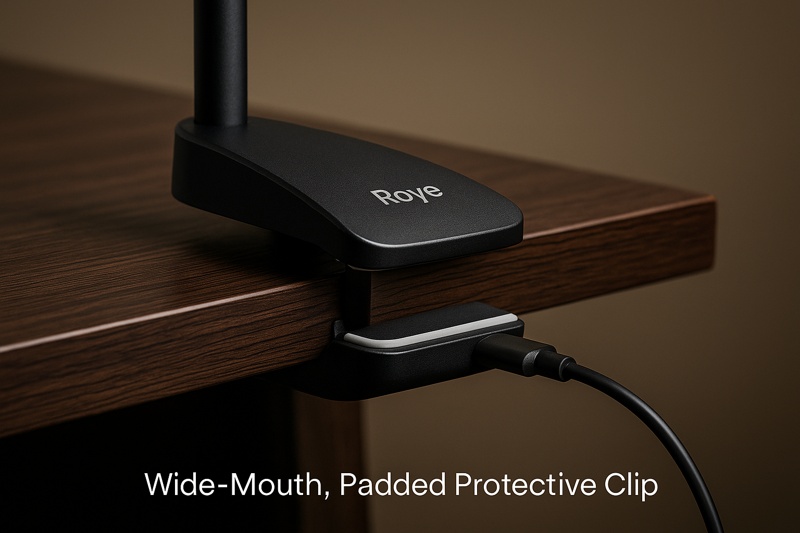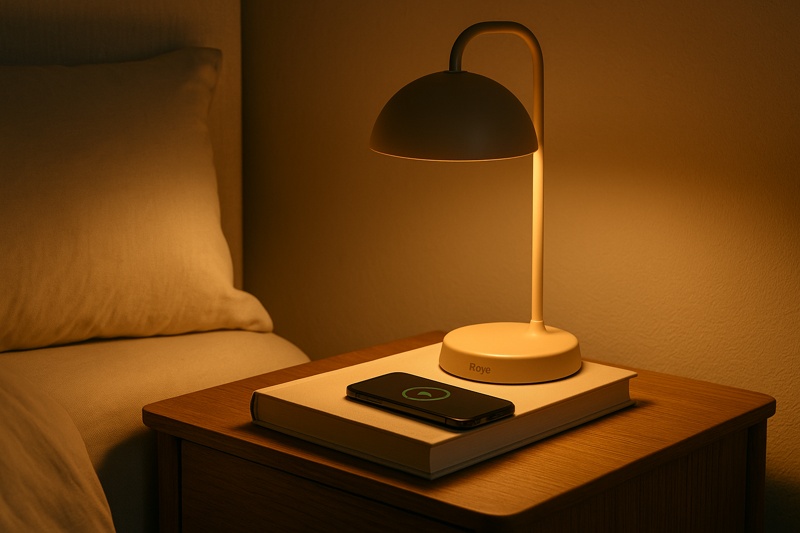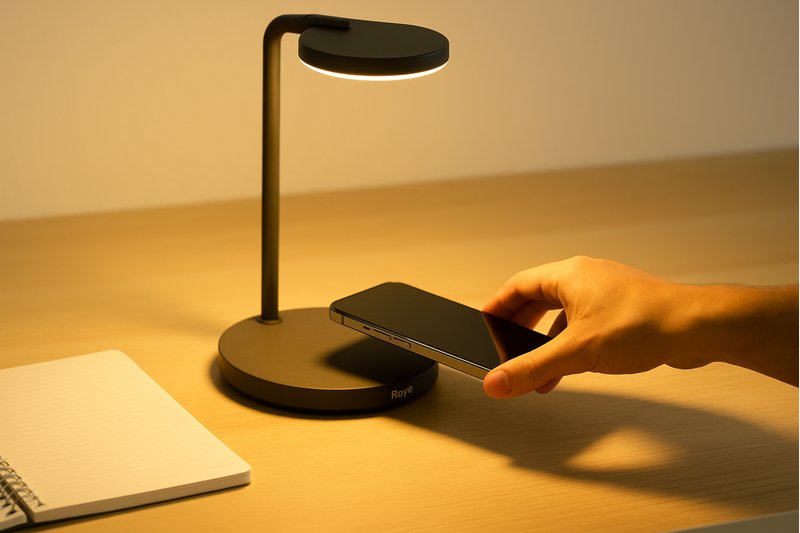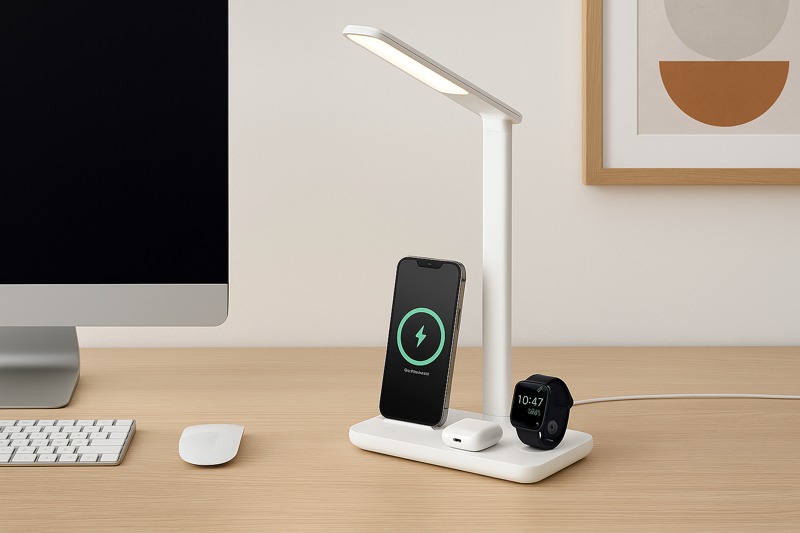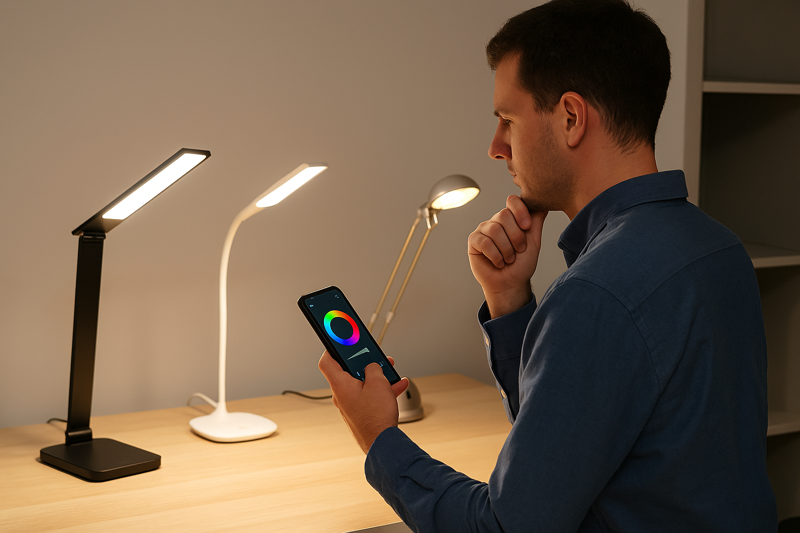
Are you overwhelmed by the choices when looking for a new desk lamp? Picking the wrong one leads to eye strain and a poorly lit workspace, affecting your work. This guide will help you choose the ideal dimmable LED desk lamp.
Selecting the right dimmable LED desk lamp involves evaluating brightness range, color temperature options, Color Rendering Index (CRI), adjustability, and design features to match your specific task and workspace needs.
Ready to find a lamp that truly works for you? Let's explore what to look for.
Why is Brightness Range (Lumens & Dimming Steps) Crucial?
Do you find your current desk light either too glaring or too faint for different tasks? A lamp with fixed brightness or limited dimming can't adapt. A wide, controllable brightness range is key.
A crucial feature is the brightness range, measured in lumens for maximum output, and the number of dimming steps or smoothness of control for precise task-specific illumination.
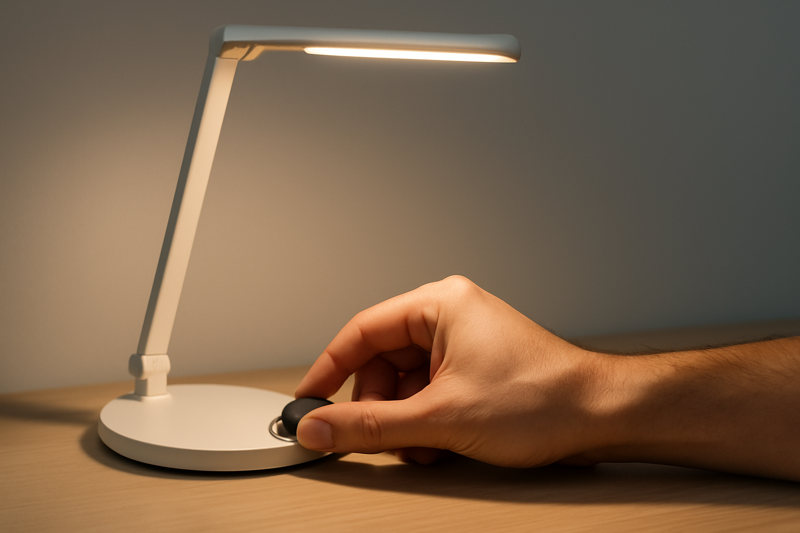
When I discuss lighting needs with Buyers or Product Managers, the conversation often turns to versatility. They might need bright light for detailed inspections in a factory setting, or softer light for general office work. A fixed light just doesn't cut it. This is a common pain point for my typical customers, who are looking for reliable suppliers with advanced R&D capabilities.
Understanding Lumens vs. Watts
For years, people thought about bulb brightness in terms of watts. But watts measure energy use, not light output. Lumens measure actual brightness. With energy-efficient LEDs, you get more lumens with fewer watts. So, when you're looking at a dimmable LED desk lamp, check the maximum lumen output. This tells you how bright it can get. For most desk tasks, a lamp that can provide around 450-1000 lumens at its brightest is usually sufficient, but the ability to dim it way down is just as important. At Roye Lamp, we focus on providing study lamps and eye-caring desk lamps that offer a useful lumen range.
The Importance of Granular Dimming Control
It's not just about how bright or dim it can get. It's also about how many steps1 are in between, or how smooth the dimming is. Some lamps have just three settings: low, medium, high. Others offer five, seven, or even continuous dimming2. More control means you can fine-tune the light perfectly. Imagine you're working on a computer. You want to reduce glare. A subtle dimming adjustment can make a big difference. Then, if you switch to reading a paper document, you might need a bit more light. Smooth, granular control prevents your eyes from having to make big adjustments.
Task-Specific Brightness Needs
Different tasks need different light levels for optimal visibility and comfort. Here’s a general guide:
| Task | Recommended Brightness Level | Why It Matters |
|---|---|---|
| General Ambient Lighting on Desk | Low (e.g., 200-300 lumens) | Reduces contrast with screen, comfortable for background |
| Computer Work / Typing | Low to Medium (300-500 lumens) | Minimizes screen glare, reduces eye strain |
| Reading Paper Documents | Medium (400-600 lumens) | Ensures text is clear and easy to read |
| Detailed Crafting / Drafting / Drawing | High (600-1000+ lumens) | Illuminates fine details, improves accuracy |
| Video Conferencing | Medium, well-diffused | Provides even facial lighting, looks professional |
Having a dimmable LED desk lamp with a good range and fine control allows you to adapt the light perfectly to each activity. This flexibility is something our clients in The United States and The United Kingdom really value, especially when they are trying to solve quality problems with previous suppliers.
How Does Adjustable Color Temperature (CCT) Impact Productivity and Mood?
Do you sometimes feel tired and unfocused, or maybe a bit too agitated at your desk? The color of your light could be playing a part. A lamp stuck on one color temperature doesn't help.
Adjustable Color Temperature (CCT) lets you switch between cool, energizing light for focus and warm, relaxing light for comfort, significantly boosting productivity and mood throughout the day.
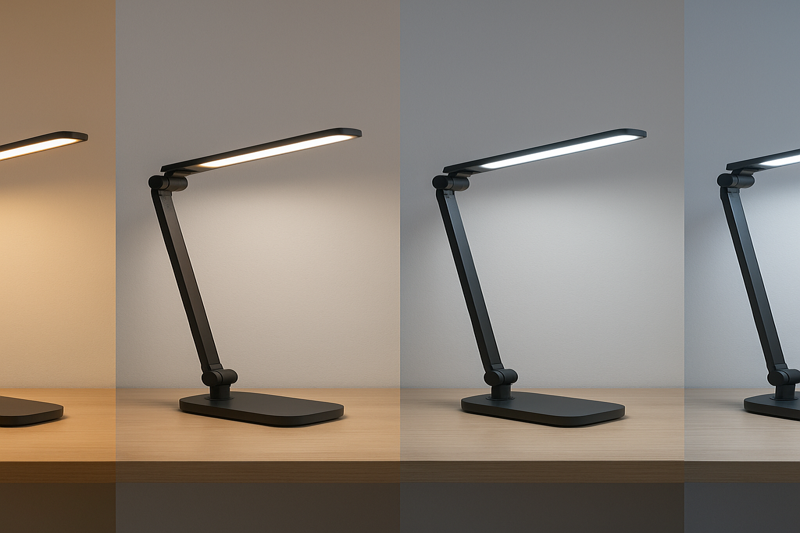
As a Marketing Manager for Roye Lamp, I've learned that light isn't just about visibility. It's about how it makes you feel and perform. Our eye-caring desk lamps often feature adjustable CCT because we know our customers, from Owners to Buyers, are looking for products with advanced functions that improve the work environment. This is especially true for our export markets like the Netherlands.
The Kelvin Scale Explained for Lighting
Color temperature is measured in Kelvin (K). Lower Kelvin values (e.g., 2700K-3000K) mean warmer, more yellowish light, like a traditional incandescent bulb or a sunset. Higher Kelvin values (e.g., 5000K-6500K) mean cooler, more bluish-white light, similar to daylight on an overcast day. A lamp with adjustable CCT allows you to choose the color of light that best suits your task or time of day.
Cool Light for Alertness and Detail
Cool white light (typically 4000K to 6500K) is known to promote alertness and concentration. It's great for tasks that require attention to detail, like studying, drafting, or intricate repair work. Think of it as your "daytime mode" or "focus mode." When I'm working on detailed marketing reports or analyzing data, I prefer a cooler light setting. It helps me stay sharp. Many of our clients who purchase study lamps want this feature for focused work sessions.
Warm Light for Relaxation and Evening Work
Warm white light (typically 2700K to 3500K) creates a cozier, more relaxing atmosphere. It's easier on the eyes, especially in the evening or when you're trying to wind down. If you're reading before bed, or doing less intensive computer work late at night, a warmer CCT can help. It can also make a workspace feel more inviting. This aligns with our goal at Roye Lamp to use light to make life comfortable and fashionable.
Here's how different CCTs generally affect you:
| CCT Range (Kelvin) | Light Appearance | Psychological Effect | Best For |
|---|---|---|---|
| 2700K - 3000K | Warm White (Yellowish) | Cozy, Relaxing, Inviting | Evening work, reading for pleasure, reducing eye strain |
| 3500K - 4500K | Neutral/Natural White | Balanced, Comfortable, Good for general use | Everyday tasks, general office work, video calls |
| 5000K - 6500K | Cool White (Bluish) | Alert, Focused, Energizing | Detail-oriented work, studying, tasks requiring precision |
Being able to adjust CCT means your lamp can support your body's natural rhythms and your work demands. This is a key feature that many buyers look for when sourcing new products through Google or at Lighting Fairs.
What Role Does Color Rendering Index (CRI) Play for Accurate Visual Work?
Have you ever picked out a color under artificial light, only to find it looks completely different in daylight? Your lamp's ability to show true colors, its CRI, is likely the cause. Low CRI misrepresents colors.
Color Rendering Index (CRI) measures how accurately a light source reveals the true colors of objects. For designers, artists, or anyone working with color, a high CRI (90+) is essential.
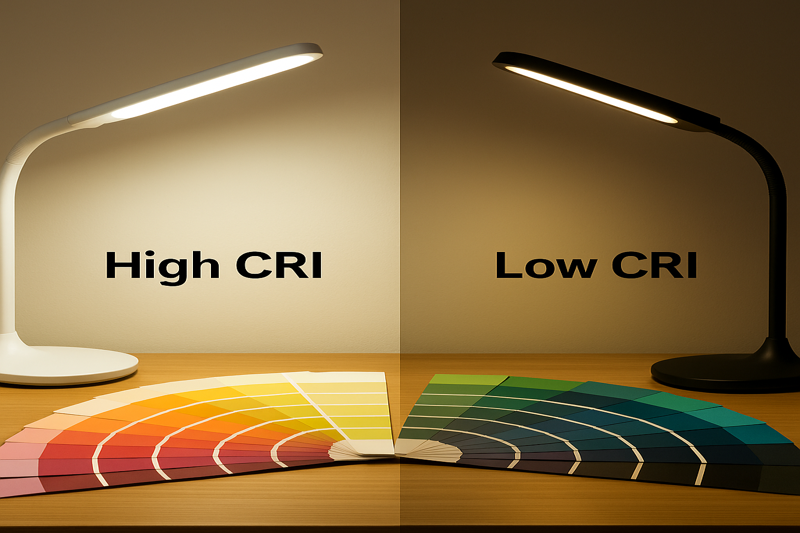
For professionals whose work depends on color accuracy – like graphic designers, architects choosing material finishes, or even quality control inspectors – CRI is not just a nice-to-have, it's a must-have. At Roye Lamp, we understand this. While we provide lamps with competitive prices, we also stress the importance of stable quality, and for certain applications, high CRI is part of that quality.
Defining CRI and Its Scale
CRI is measured on a scale from 0 to 100, with 100 being perfect (like natural daylight). A light source with a low CRI will make colors appear dull, washed out, or even shifted in hue. A high CRI light source will render colors vividly and accurately. For most general purposes, a CRI of 80+ is considered good. But for color-critical tasks, you really want 90 or higher, ideally 95+.
Why High CRI Matters for Designers, Artists, and Detail-Oriented Tasks
Imagine an interior designer selecting fabric swatches under a low CRI lamp. The colors might look fine in the studio. But when those fabrics are installed in a client's home with natural light, they could look completely different, leading to costly mistakes and unhappy clients. Similarly, a product photographer needs high CRI lighting to capture true product colors. Even for tasks like applying makeup or choosing clothes, high CRI light gives you a much better sense of how things will look in the real world. This is a key focus for our Buyers and Product Managers who need new models with advanced features to meet market demands in the USA and UK.
Spotting the Difference: Low vs. High CRI
It can be subtle, but the difference is noticeable. Under low CRI light:
- Reds might appear brownish or dull.
- Blues and greens might lose their vibrancy.
- Skin tones can look unnatural.
Under high CRI light:
- Colors appear rich and saturated.
- Subtle variations in shade and tone are clearly visible.
- Everything looks more natural and "true."
Let's look at what CRI values mean in practice:
| CRI Value | Color Accuracy | Typical Application |
|---|---|---|
| Below 70 | Poor | Industrial areas, street lighting (older tech) |
| 70-79 | Fair | Some office, retail (basic functional lighting) |
| 80-89 | Good | General home and office use, good visual comfort |
| 90-94 | Excellent | Design work, art studios, retail display, medical |
| 95+ | Superior | Color-critical tasks, museums, high-end photography |
When you are a Product Manager or Buyer looking for suppliers, asking about the CRI3 of a desk lamp, especially an eye-caring desk lamp4 or study lamp, is very important if color accuracy5 matters to your end-users. It's a detail that separates a basic lamp from a professional-grade tool.
What Ergonomic and Design Features Should You Look For?
Is your current desk lamp awkward to adjust, wobbly, or does it shine right into your eyes? Poor lamp design can create more problems than it solves. Smart ergonomic and design features make a lamp a pleasure to use.
Look for ergonomic features like a highly flexible arm, a stable base or secure clamp, effective glare reduction, and a design that complements your workspace aesthetics and workflow.
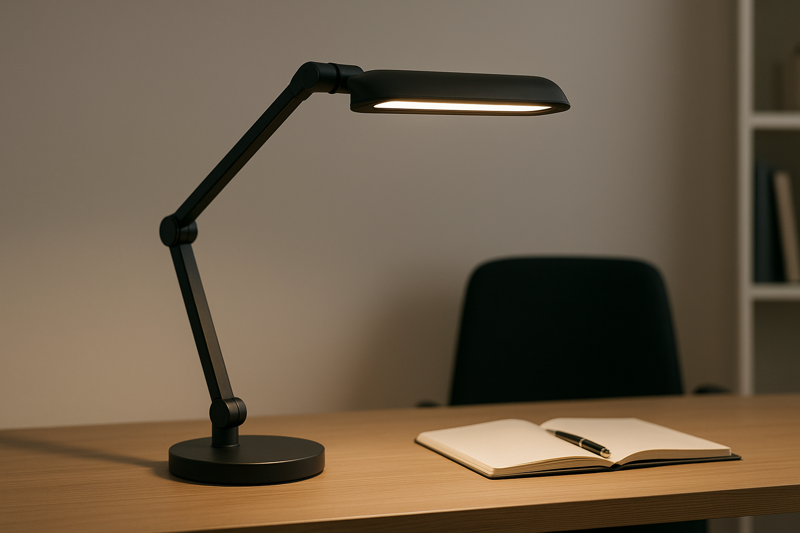
Beyond the light itself, how the lamp is built and how it fits into your workspace is critical. As a manufacturer and B2B supplier, Roye Lamp pays close attention to these details. Our clients, often Owners or CEOs, expect not just good light but also a product that is well-made, easy to use, and looks good. This is part of delivering stable quality.
Adjustability and Reach: Positioning is Key
A good desk lamp should put light exactly where you need it, without getting in your way.
- Flexible Gooseneck or Multi-Joint Arm: These allow for a wide range of motion. You can raise, lower, and angle the light head easily. A long reach is especially useful for larger desks or if you need to illuminate different zones.
- Swivel Head: The ability to rotate the lamp head itself gives you even more control over the light direction.
These features ensure you can avoid shadows and direct light precisely for any task. This is something our R&D team constantly works on for new product development.
Glare Control and Light Diffusion
Direct, harsh light causes glare on your screen or work surface, leading to eye strain. Look for lamps with:
- Built-in Diffusers: These soften and spread the light, creating a more even illumination.
- Shielded or Recessed LEDs: This prevents you from looking directly into the light source.
Our eye-caring desk lamps at Roye Lamp prioritize these features. This directly addresses a common pain point for users: eye fatigue.
Base Type: Stability vs. Space-Saving
- Weighted Base: Provides good stability for freestanding lamps. Make sure it's heavy enough so the lamp doesn't tip when the arm is extended.
- Clamp Mount: Saves valuable desk space. Ideal for smaller desks or if you prefer a cleaner look. Ensure the clamp is sturdy and won't damage your desk surface. Some of our desk lamp models offer both options.
Aesthetics and Material Quality
While function is paramount, the lamp should also look good in your workspace.
- Style: Choose a design that matches your decor – modern, minimalist, industrial, etc.
- Materials: Look for durable materials like metal or high-quality plastics. This contributes to the lamp's longevity and the perception of stable quality, which is important when trying to find a reliable supplier. We, as manufacturers in China, understand the global market's demand for both aesthetics and durability.
Consider these ergonomic and design aspects:
| Ergonomic/Design Feature | Benefit for Your Workspace |
|---|---|
| Flexible Arm/Gooseneck | Precise light positioning, versatility for different tasks |
| Swivel Lamp Head | Fine-tunes light direction, reduces need to move entire lamp |
| Effective Glare Shielding | Reduces eye strain, improves screen visibility, enhances comfort |
| Stable Base / Secure Clamp | Prevents tipping, ensures safety, saves space (clamp) |
| Intuitive Controls | Easy to adjust brightness and CCT without fuss |
| Appropriate Size/Scale | Fits well on your desk without being obtrusive or too small |
| Aesthetic Appeal | Complements your workspace design, can enhance your mood and focus |
Investing in a well-designed, ergonomic lamp is an investment in your comfort and productivity. These are the features that often distinguish high-quality new models that our customers, especially those finding suppliers through Google and Lighting Fairs, are looking for.
Conclusion
Choosing the right dimmable LED lamp means considering brightness, CCT, CRI, ergonomics, and design for an optimized, comfortable, and productive workspace.
-
Understanding the benefits of multiple dimming steps can help you choose the right lamp for your needs. ↩
-
Learning about continuous dimming can help you appreciate its advantages for various lighting scenarios. ↩
-
Understanding CRI is crucial for selecting lighting that enhances color accuracy, especially in professional settings. Explore this link to learn more. ↩
-
Choosing the right eye-caring desk lamp can significantly impact comfort and productivity. Find out what to look for in a quality lamp. ↩
-
Color accuracy is vital for achieving true-to-life visuals in design and photography. Discover insights on this topic to make informed choices. ↩


